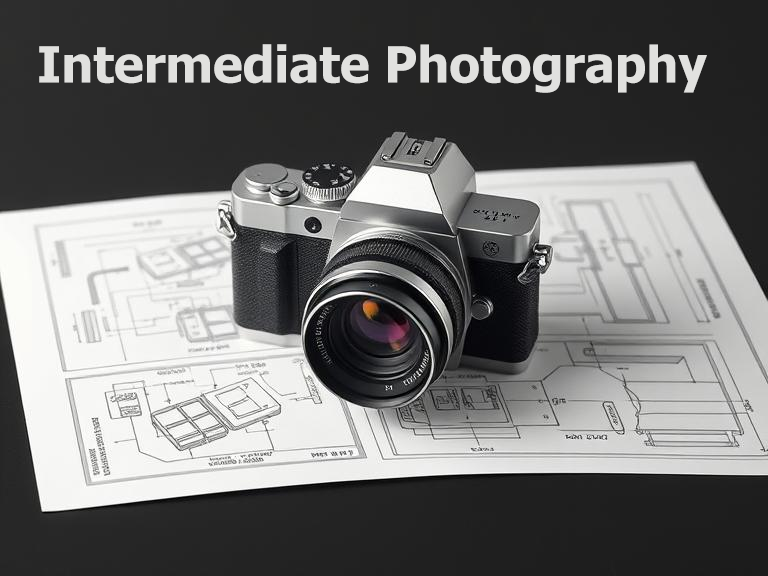Introduction to DSLRs and Mirrorless Cameras
For intermediate photographers, the choice between Digital Single-Lens Reflex (DSLR) cameras and mirrorless cameras can be a pivotal decision that shapes their photographic journey. Both systems come with their unique advantages and disadvantages, catering to different styles and preferences. This article aims to provide a comprehensive comparison of DSLRs and mirrorless cameras, helping photographers make informed choices based on their needs and aspirations.
Understanding the Mechanics
DSLRs utilize a mirror mechanism to reflect light from the camera’s lens up into an optical viewfinder. This allows photographers to see exactly what the lens sees, providing a real-time view of the scene. When the shutter button is pressed, the mirror flips up, allowing light to hit the image sensor.
In contrast, mirrorless cameras operate without a mirror box. Instead, they use electronic viewfinders or LCD screens to display the image captured by the sensor. This fundamental difference in mechanics not only affects the size and weight of the cameras but also influences the overall shooting experience.
Size and Weight Considerations
One of the most significant advantages of mirrorless cameras is their compact size and lighter weight. Without the bulk of the mirror and prism system found in DSLRs, mirrorless models are often more portable, making them an appealing option for photographers who travel frequently or prefer a less cumbersome setup.
While DSLRs tend to be larger and heavier, many photographers appreciate the robust feel and ergonomics of these cameras. The additional weight can contribute to stability when shooting, especially with longer lenses. However, for those looking to minimize gear weight, mirrorless options can be a compelling choice.
Autofocus Performance
Autofocus technology has advanced significantly in both systems over the years. Traditionally, DSLRs relied on phase-detection autofocus, which is fast and effective, particularly for tracking moving subjects. However, mirrorless cameras have closed the gap with hybrid autofocus systems that combine phase-detection with contrast-detection, providing excellent performance even in low light.
For intermediate photographers interested in action or wildlife photography, fast and reliable autofocus is crucial. In many cases, mirrorless cameras now offer superior autofocus capabilities, including eye-tracking features that can dramatically enhance portrait photography.
Battery Life and Shooting Experience
When it comes to battery life, DSLRs generally have the upper hand. They can capture hundreds of images on a single charge, largely due to the optical viewfinder, which doesn’t consume power. This is an essential consideration for photographers who shoot long events or in remote locations without access to charging facilities.
Mirrorless cameras, on the other hand, rely heavily on electronic displays, which can drain the battery more quickly. However, advancements in battery technology are helping bridge this gap. Intermediate photographers should assess their shooting style and frequency of use to determine which system aligns best with their needs.
Lens and Accessory Availability
Both DSLRs and mirrorless cameras have extensive ecosystems of lenses and accessories, but there are notable differences. DSLRs have been around longer and typically offer a broader selection of lenses, including a wide range of professional-grade options. This established market can be beneficial for photographers who wish to build a diverse kit.
Mirrorless systems have been expanding rapidly, and many manufacturers are investing heavily in new lens designs tailored for these cameras. While the selection may not be as vast as that of DSLRs, the gap is narrowing quickly. Intermediate photographers should consider the specific lenses available for each system and evaluate how they align with their photographic goals.
Image Quality and Performance
Both DSLRs and mirrorless cameras offer exceptional image quality, thanks to advancements in sensor technology. Intermediate photographers can expect high-resolution images with excellent dynamic range from both systems. However, the choice of camera can influence how these images are captured and processed.
Mirrorless cameras often feature advanced image processing algorithms that can enhance color accuracy and low-light performance. Meanwhile, DSLRs may excel in certain conditions due to their optical viewfinders, which allow for a clearer view in bright light. Ultimately, the decision should be based on personal preference and the specific shooting scenarios photographers anticipate.
Final Thoughts
Choosing between a DSLR and a mirrorless camera as an intermediate photographer is a decision that depends on various factors, including shooting style, portability, and personal preferences. Each system has its strengths and weaknesses, and the best choice will ultimately align with the photographer’s goals and workflow.
As technology continues to evolve, both DSLRs and mirrorless cameras will likely adapt to meet the needs of photographers. By understanding the key differences and advantages of each system, intermediate photographers can take confident steps toward enhancing their craft and capturing stunning images.


